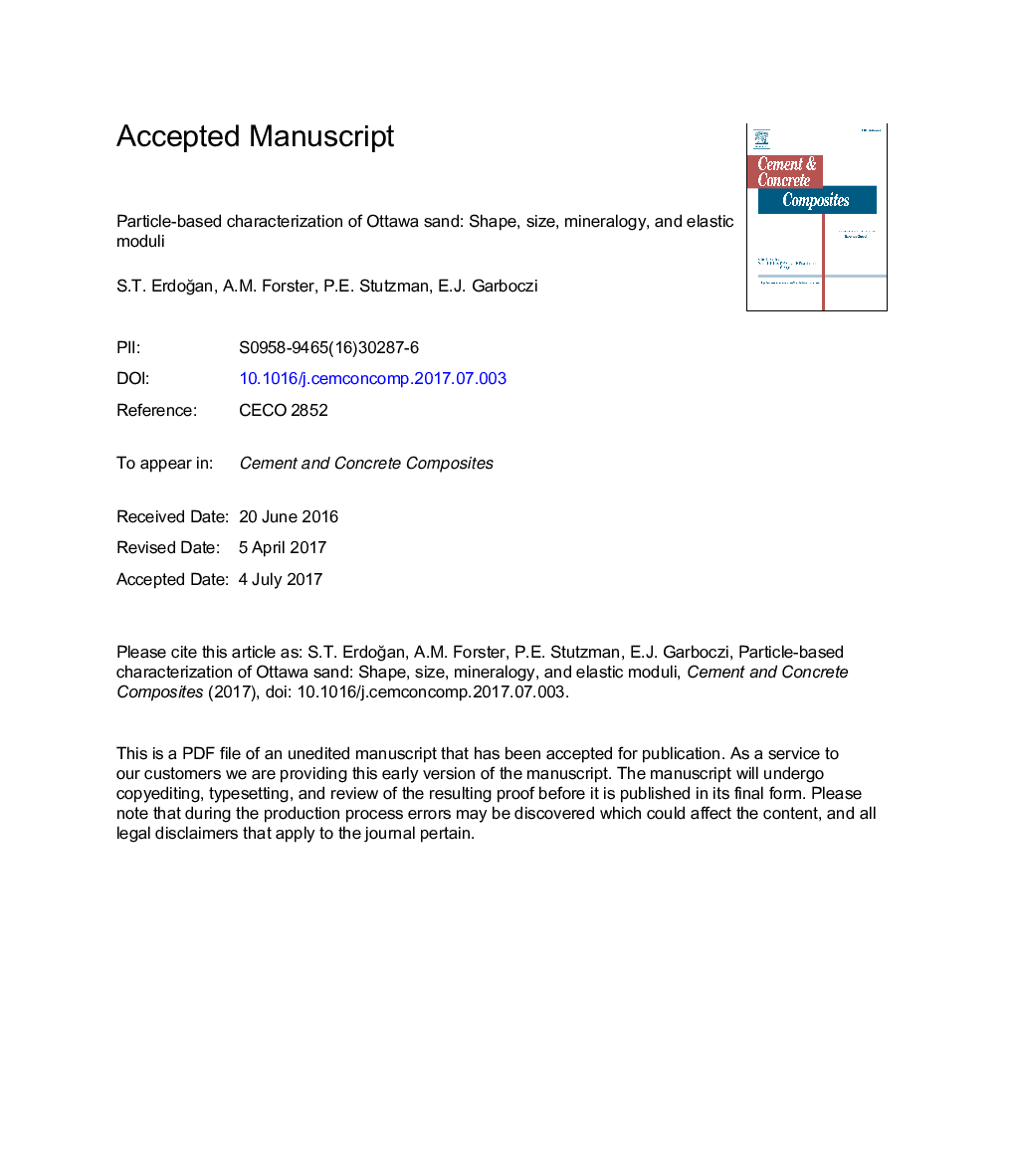| کد مقاله | کد نشریه | سال انتشار | مقاله انگلیسی | نسخه تمام متن |
|---|---|---|---|---|
| 5436799 | 1509650 | 2017 | 23 صفحه PDF | دانلود رایگان |
عنوان انگلیسی مقاله ISI
Particle-based characterization of Ottawa sand: Shape, size, mineralogy, and elastic moduli
ترجمه فارسی عنوان
تعریف ذرات بر اساس ذرات اتاوا: شکل، اندازه، کانی شناسی و مدول الاستیک
دانلود مقاله + سفارش ترجمه
دانلود مقاله ISI انگلیسی
رایگان برای ایرانیان
کلمات کلیدی
آزمایشگاه آزمایشی سیمان و بتن، ماسه اتاوا، نانو انداختن، پراش اشعه ایکس، اشعه ایکس کامپیوتری، پراش لیزر،
موضوعات مرتبط
مهندسی و علوم پایه
سایر رشته های مهندسی
مهندسی صنعتی و تولید
چکیده انگلیسی
The success of computational materials science models for cement and concrete, at the micrometer-to-millimeter scale, is based on careful characterization of the two main starting materials - cement and aggregates. Concrete is a complex material, and models based on over-simplified chemical, geometrical, and topological assumptions have limits on the behavior they can realistically simulate. In this paper, a sample of Ottawa sand was carefully characterized, since this material is used in laboratories all around North America as the specified sand for many standard tests, including what is possibly the most highly-used ASTM test of all in the field of cement-based materials, C-109, the mortar cube strength test. Particle shape and size distributions were acquired via a combination of X-ray tomography, spherical harmonic analysis, sieve analysis, microscopy and image analysis, and laser diffraction. Quantitative X-ray diffraction showed that the Ottawa sand used was very pure αâquartz with 1% amorphous content. Elastic moduli information at the particle level was obtained via instrumented nanoindentation. Polarized light microscopy showed that the particles that were indented were single crystals. Results for the Young's modulus, E, of Ottawa sand were E = 110 GPa ± 5 GPa (assumed Poisson's ratio of 0.08), in agreement with other nanoindentation results for Ottawa sand in the literature but more than one standard deviation larger than the results obtained from isotropic averages of the elastic moduli tensor of αâquartz, measured by ultrasonic and Brillouin scattering techniques and averaged in various ways. This kind of disagreement has been seen for other minerals as well as αâquartz, and indicates that nanoindentation measurement of elastic moduli for particulate minerals used in cement and concrete and other applications must be used with some care. This characterization procedure can now be confidently employed for any class of sand or gravel particle that is desired to be used in a three-dimensional mortar or concrete model.
ناشر
Database: Elsevier - ScienceDirect (ساینس دایرکت)
Journal: Cement and Concrete Composites - Volume 83, October 2017, Pages 36-44
Journal: Cement and Concrete Composites - Volume 83, October 2017, Pages 36-44
نویسندگان
S.T. ErdoÄan, A.M. Forster, P.E. Stutzman, E.J. Garboczi,
